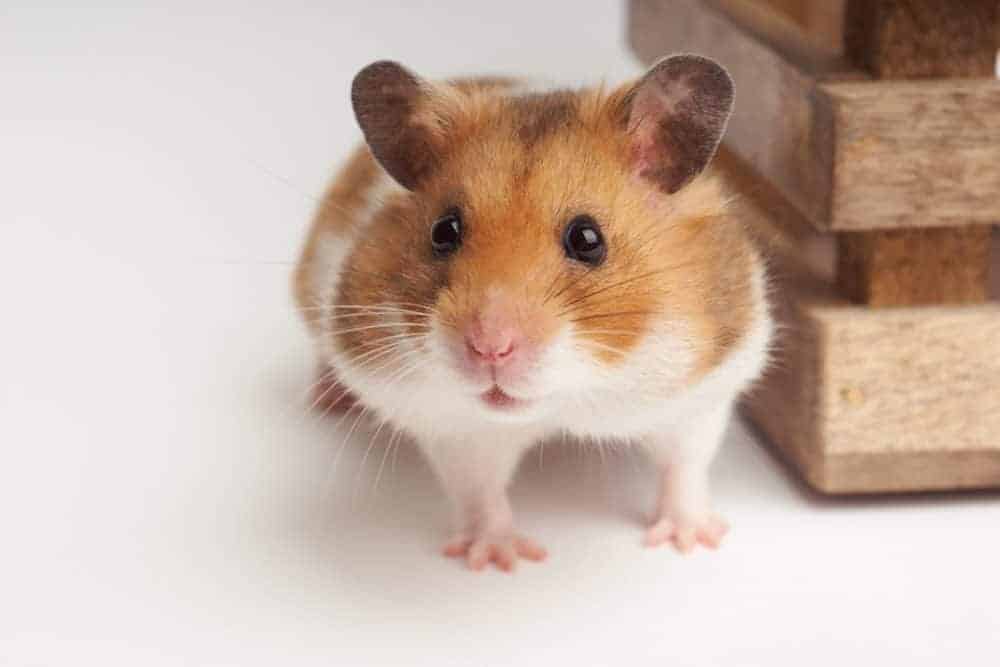Understanding Syrian Hamster Characteristics
Physical Characteristics of Syrian Hamsters
Syrian hamsters are recognizable by their robust, compact bodies and large cheek pouches. Typically, they measure between 5 to 7 inches in length, making them one of the larger breeds of hamsters. They come in various colors, including golden, black, and white, with some having distinct patterns on their fur. Their fur is soft and dense, and it may vary in length—some have short hair while others possess long, shaggy coats. The image above showcases a Syrian hamster displaying its beautiful fur characteristics:
Personality Traits of Syrian Hamsters
Beyond their adorable appearance, **Syrian hamsters** are known for their distinct personalities. They are generally solitary animals, thriving best when kept alone due to their territorial nature. Syrian hamsters are typically friendly and gentle, making them a popular choice for both beginners and experienced pet owners. They can develop bonds with their caregivers if handled regularly from a young age. Providing them with a stimulating environment enhances their personality, and they will often showcase their playful side when exploring new toys or tunnels.
Activity Levels
<p**Syrian hamsters** are nocturnal creatures, meaning they are most active during the night. They enjoy running and playing, particularly on exercise wheels. Regular exercise is important for their health and helps prevent obesity, which can be a concern for these small pets. Ensuring they have ample space to roam in a safe environment is crucial for their wellbeing. Additionally, enriching their habitat with toys and hiding spots encourages natural behaviors, keeping them mentally stimulated and happy.
Behavioral Characteristics
Another notable aspect of Syrian hamsters’ characteristics is their behavior. They exhibit a range of activities that can be intriguing for owners and important for their wellbeing. Hamsters, particularly **Syrian hamsters**, can communicate through vocalizations, including squeaks and chirps, especially when they are startled or excited. As nocturnal animals, their nighttime antics can provide entertainment for owners who observe them during late hours. Their natural instincts include digging and hoarding food, which can be facilitated by appropriate bedding materials and hiding places in their enclosures.
Social Interactions
While **Syrian hamsters** are known to be solitary animals, they are not without their need for social interactions—at least, with their human caretakers. Regular handling and positive interactions can help them feel secure and comfortable. Initially skittish, these animals often become more relaxed with consistent exposure to their owners. To facilitate this bonding process, it’s essential to introduce yourself calmly and allow the hamster to come to you at its own pace. This gradual approach helps build trust, essential for any successful pet relationship.
Habitat Requirements
Creating a comfortable and enriching habitat is fundamental for the health of **Syrian hamsters**. They require a spacious cage that is well-ventilated and escape-proof, with a minimum size of 24” x 12”. The bedding should be absorbent and safe, like aspen shavings or paper-based bedding. Accessories such as tunnels, wheels, and chew toys can help stimulate natural behaviors and prevent boredom. It’s also essential to provide fresh food and clean water daily for optimal health. The image below illustrates an ideal habitat setup for a Syrian hamster:
Health Characteristics of Syrian Hamsters
**Syrian hamsters** may be small, but their health requires attention to detail. Being aware of common health issues can facilitate better care for your pet. They are prone to certain conditions, such as wet tail—a serious intestinal disease often caused by stress or bacterial infections. Other prevalent problems include tumors, respiratory issues, and obesity. Regular vet check-ups can help to detect any issues early on, ensuring that your hamster remains healthy and thrives.
Dietary Needs
Diet plays a significant role in the health of **Syrian hamsters**. A wholesome diet should comprise high-quality hamster pellets, fresh fruits, and vegetables. It’s essential to avoid sugary treats and citrus fruits, as they can cause digestive issues. Additionally, providing occasional high-protein snacks, such as mealworms or boiled eggs, can contribute to their nutritional balance. Always ensure access to fresh, clean water; hydration is key to maintaining their health and vitality.
Signs of a Healthy Syrian Hamster
Understanding the signs of a healthy Syrian hamster can aid in proactive care. A well-cared-for hamster will have bright, alert eyes, a clean coat, and healthy weight. They should be active and interactive, not lethargic. Regular monitoring of their food intake and behavior is crucial. Any changes in appetite, excessive grooming, or unusual movements can indicate health concerns. Observing your Syrian hamster closely allows for prompt intervention should any health issues arise.
Key Takeaways
- Syrian hamsters are friendly and gentle, requiring solitary living setups.
- They are nocturnal, offering lively entertainment during night hours.
- Creating an enriching habitat is crucial for their mental and physical well-being.
- Regular health checks and a balanced diet ensure long, healthy lives.
- Bonding with your hamster involves patient and positive interactions.
FAQ
1. What is the lifespan of a Syrian hamster?
The average lifespan of a **Syrian hamster** ranges from 2 to 3 years, but with proper care, some can live up to 4 years. Providing a healthy diet, a suitable habitat, and regular vet check-ups can help extend their life.
2. Can Syrian hamsters be kept together?
No, **Syrian hamsters** are solitary animals. They can become aggressive if housed together, especially if they are not introduced properly. It’s best to keep them alone in their enclosure.
3. What should I provide for a Syrian hamster’s training?
When training a **Syrian hamster**, patience is key. Offer treats and use gentle encouragement to teach them various tricks or to use a litter area. A peaceful environment aids this training process.
4. How often should I clean my hamster’s cage?
It’s advisable to clean your hamster’s cage at least once a week. Spot cleaning helps maintain hygiene, while a full clean involves changing bedding and thoroughly washing toys and the cage itself.
5. What common health issues should I watch for?
Common health issues in **Syrian hamsters** include wet tail, respiratory problems, and tumors. It’s crucial to observe your hamster for any signs of illness, such as lethargy or changes in eating habits, and consult a vet when needed.
By focusing on the necessary care, behavioral traits, and health management of **Syrian hamsters**, owners can provide a happy and healthy life for their beloved pets.

